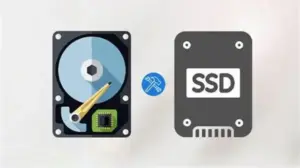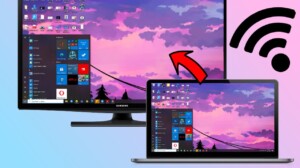Have a brilliant idea for a mobile app but lack the coding skills to bring it to life? You’re in luck! The landscape of no-code app builders has evolved significantly in April 2025, offering even more powerful and user-friendly platforms to transform your vision into a reality without writing a single line of code. I’ve observed countless individuals and businesses successfully launch their apps using these tools, and I’m excited to guide you through the process. This detailed guide will walk you through the steps to create your own mobile app without coding in the current environment, empowering you to share your innovative ideas with the world.
Step 1: Solidify Your App Idea and Plan for April 2025
Before you even consider a no-code platform, a solid plan is essential for creating a successful app.
- Clearly Define Your App’s Purpose: What specific problem will your app solve for users in April 2025? What unique value will it offer? A tightly focused app is often more effective than one with too many features.
- Identify Your Target Audience: Who are the ideal users for your app in today’s market? Understanding their demographics, needs, and tech savviness will influence your design and features.
- Outline Core Features and Functionality: List all the essential features your app must have for its initial launch (Minimum Viable Product or MVP). Consider what’s currently trending in mobile apps in April 2025. You can always add more features in future updates.
- Sketch Your App’s User Interface (UI) and User Experience (UX): Even with no-code platforms, planning the visual layout and how users will interact with your app is critical. Sketch out wireframes or use simple design tools to map out the different screens and user flows. Focus on creating an intuitive and enjoyable experience for users in 2025.
- Determine Your Monetization Strategy (If Applicable): If you plan to earn revenue from your app, decide on your monetization model. Popular options in April 2025 include in-app purchases, subscriptions, advertising, or a freemium model.
Step 2: Explore and Choose a No-Code App Builder Platform (April 2025 Options)
The no-code app builder market is thriving in April 2025, with diverse platforms catering to various needs and skill levels.
- Research Leading Platforms: Explore the features, pricing, and suitability of popular no-code app builders currently available:
- AppGyver (SAP Build Apps): Still a robust and free platform favored for its flexibility in building complex apps.
- Adalo: Remains popular for its user-friendly interface and strong database capabilities, ideal for database-driven apps.
- Glide: Continues to be a quick way to turn Google Sheets or Excel data into functional mobile apps.
- Bubble: A powerful platform offering extensive customization and integrations, suitable for more complex app ideas.
- Thunkable: A drag-and-drop builder known for its ease of use and ability to integrate with APIs and IoT devices.
- Bravo Studio: Caters to designers who prefer to create their UI in tools like Figma or Adobe XD and then connect it to backend data without code.
- Softr: Specializes in building web applications and client portals on top of platforms like Airtable or Google Sheets.
- Compare Features Relevant to Your App Idea: Carefully evaluate the features offered by each platform and see if they align with the functionality you need for your app in April 2025. Consider features like database integration, user authentication, push notifications, payment processing, and integration with other services.
- Evaluate Pricing Structures: No-code platforms typically offer tiered pricing plans. Compare the costs associated with different plans and choose one that fits your budget and expected usage in April 2025. Many offer free trials or limited free plans to get started.
- Check Recent User Reviews and Community Support: Look for up-to-date reviews from other users in April 2025 to gauge the platform’s ease of use, reliability, and the quality of its support resources. A strong community can be a valuable asset when you encounter challenges.
- Take Advantage of Free Trials: Most no-code platforms offer free trials. Sign up for a few trials to get hands-on experience with different builders and see which one feels most intuitive and capable for your project.
Step 3: Start Building Your App on Your Chosen Platform (April 2025)
Once you’ve selected the no-code app builder that best suits your needs in April 2025, it’s time to start building your app. The specific steps will vary depending on the platform, but here’s a general guide:
- Sign Up and Explore the Interface: Create an account and take some time to familiarize yourself with the platform’s dashboard, editor, and available components. Most platforms offer introductory tutorials.
- Choose a Template or Start from Scratch: Many platforms provide pre-designed templates for various app types (e.g., e-commerce, social networking, events). If your app idea aligns with a template, it can significantly speed up the development process. You can also opt to start with a blank project for full customization.
- Design Your App’s Screens and Layout: Use the platform’s drag-and-drop interface to arrange UI elements like buttons, text fields, images, lists, and navigation bars. Ensure your design is user-friendly and visually appealing for users in April 2025.
- Implement Your App’s Features and Logic: This is where you bring your app’s functionality to life using the platform’s visual builders. This might involve:
- Connecting to Databases (Internal or External): Set up data storage and retrieval for your app’s content and user information.
- Integrating with APIs: Connect your app to third-party services like payment gateways, mapping services, or social media platforms.
- Creating User Authentication: Implement login, registration, and user profile management features.
- Adding Multimedia Elements: Incorporate images, videos, and audio into your app’s screens.
- Setting Up Notifications: Configure push notifications to engage with your users.
- Defining Actions and Workflows: Use visual logic builders to define what happens when users interact with different elements of your app.
- Test Your App Frequently: Most no-code platforms provide real-time previews and the ability to test your app on different devices (simulated or actual) throughout the development process. Test often to catch and fix issues early.
Step 4: Testing, Gathering Feedback, and Refining Your App (April 2025)
Once you have a working version of your app, rigorous testing and feedback are crucial for creating a high-quality user experience in April 2025.
- Test on Multiple Devices and Platforms: Ensure your app functions correctly and looks good on various screen sizes and operating systems (iOS and Android if applicable).
- Share Your App with Beta Testers: Recruit a group of users to test your app and provide feedback on its usability, features, and any bugs they encounter.
- Collect and Analyze Feedback: Use surveys, in-app feedback forms, or direct communication to gather feedback from your testers. Analyze this feedback to identify areas for improvement.
- Iterate and Refine Your App: Based on the feedback, go back to the no-code platform and make the necessary changes and enhancements to your app’s design, functionality, and overall user experience.
Step 5: Preparing for Launch and Publishing to App Stores (April 2025)
With a polished and tested app, you’re ready to share it with the world through the app stores.
- Create Developer Accounts: If you haven’t already, you’ll need developer accounts for the Apple App Store and Google Play Store to publish your iOS and Android apps, respectively. This typically involves paying a registration fee.
- Prepare Your App Store Listings: Craft compelling app descriptions, choose relevant keywords for discoverability in April 2025, take high-quality screenshots and videos showcasing your app’s features, and set your pricing strategy (if applicable).
- Build Your App for Release: Most no-code platforms have a straightforward process for building your app into the required format for each app store (e.g., IPA for iOS, APK or AAB for Android).
- Submit Your App for Review: Once your app is built, submit it to the respective app stores for their review process. Be sure to adhere to their guidelines to minimize delays in approval.
- Launch Your App to the World! Once your app is approved, it will be available for users to download from the app stores.
Step 6: Promoting and Maintaining Your App in April 2025
Launching your app is just the beginning. Ongoing promotion and maintenance are essential for its success in the competitive app market of April 2025.
- Develop a Marketing Strategy: Plan how you will promote your app to reach your target audience. This might include social media marketing, content marketing, paid advertising, and engaging with relevant online communities.
- Gather User Feedback and Iterate: Continuously monitor user reviews and feedback on the app stores and within your app. Use this feedback to identify areas for improvement and plan future updates.
- Release Updates Regularly: Keep your app fresh and engaging by releasing updates with new features, bug fixes, and performance enhancements. Stay current with the latest mobile operating system updates in April 2025.
My Personal Perspective on No-Code App Development (April 2025)
Having observed the evolution of technology, I’m continually impressed by the power and accessibility of no-code app development in April 2025. It empowers individuals and businesses to bring their innovative ideas to life without the traditional barriers of coding knowledge and extensive development teams. While no-code platforms may have limitations for highly complex or custom applications, they provide a remarkable pathway for creating functional and valuable mobile apps for a wide range of purposes. The key is to have a clear vision, choose the right platform for your needs, and focus on creating a user-centric experience.




